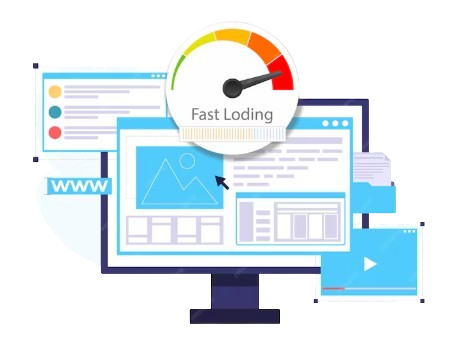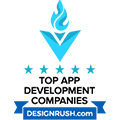Optimized web design is a game-changer when it comes to improving website load times and user experience. Implementing strategies like image compression, caching, and minifying code can dramatically enhance your website’s performance. By incorporating these practices, businesses can ensure that their websites provide a fast, seamless experience that keeps users engaged and drives success.
Website performance can make or break the user experience. A slow website can lead to high bounce rates and dissatisfied users. One of the most important factors contributing to performance is the design of the website itself. Optimized web design plays a critical role in improving load times, ensuring that your website delivers fast, seamless experiences to visitors.
In this blog post, we’ll explore how optimized web design can boost your site’s speed and why it’s crucial for overall performance.
Why Website Load Times Matter
Website load time is one of the top factors affecting user retention. A delay of just a few seconds can result in a significant drop in conversions. According to studies, nearly 50% of users abandon a page if it takes more than 3 seconds to load. Optimized web design helps to reduce this loading time, ensuring that visitors have a fast, seamless experience.
In addition to user experience, site load times are also an important factor for search engine rankings. Google uses page speed as a ranking factor, meaning that faster websites rank higher in search results. Optimizing your website’s design is an essential step in both improving user experience and boosting your visibility online.

What Is Optimized Web Design?
This web design refers to a combination of strategies and best practices aimed at improving a website’s performance. It involves reducing file sizes, improving the code quality, and ensuring that the site loads quickly on all devices. The goal is to streamline both the design and technical aspects of the website to provide users with the best possible experience.
Optimized web design focuses on three key elements:
- Image Optimization – Images are often the largest files on a website. Optimizing image size and format can drastically reduce load times. Using modern image formats like WebP and compressing large images helps to balance quality and performance.
- Efficient Coding – Clean, efficient code reduces the time a website takes to load. Using CSS and JavaScript files wisely, along with minimizing unnecessary scripts, plays a major role in optimized web design.
- Mobile Optimization – Mobile users make up a large portion of web traffic. Ensuring that your website is optimized for mobile devices can improve user experience and speed, especially in regions where internet connections may not be as fast.
Techniques for Optimized Web Design
To achieve optimized web design, you need to adopt a series of techniques. These methods help to make your website faster, more responsive, and user-friendly. Below are several important techniques to consider when designing or redesigning your website.
1. Image Compression
As mentioned earlier, large images can significantly slow down a website. To avoid this, it’s essential to compress images without sacrificing quality. Tools like TinyPNG or ImageOptim allow for image optimization, ensuring smaller file sizes and faster load times.
2. Browser Caching
Browser caching allows visitors to store certain elements of your website on their device. This means that when they visit your site again, these elements don’t need to be downloaded again, speeding up load times. Optimized web design incorporates caching strategies that improve page loading by storing static resources locally.
3. Minifying CSS, JavaScript, and HTML
Minification is the process of removing unnecessary characters from code, such as whitespace, comments, and line breaks. This reduces the size of the files and helps the website load faster. By incorporating minification into your website’s design, you will experience quicker load times and better overall performance.
4. Use of Content Delivery Networks (CDNs)
A content delivery network (CDN) is a network of servers strategically located around the world. By using a CDN, your website’s content is served from the closest server to the user, improving load time and reducing latency. This is a key feature of optimized web design, ensuring that visitors can access your site quickly no matter where they are located.
5. Lazy Loading
Lazy loading is a technique where images and other resources only load when they are needed. Instead of loading everything at once, content loads as the user scrolls down the page. This can dramatically improve page load times, especially for websites with heavy media content.
6. Avoiding Too Many HTTP Requests
Every time a user visits a website, their browser sends HTTP requests for each element (images, scripts, stylesheets, etc.). Reducing the number of HTTP requests by combining files and limiting external resources is a crucial part of optimized web design. Fewer requests result in faster page load times.
Benefits of Optimized Web Design
The advantages of optimized web design are numerous. For starters, it leads to faster loading times, which directly contributes to improved user experience. When your website loads quickly, users are more likely to stay longer and interact with your content.
Additionally, search engine rankings are boosted by faster loading times. As Google considers page speed a ranking factor, a website with optimized web design is more likely to rank higher in search results, driving more traffic to the site.
This web design also helps reduce bounce rates. If your website loads quickly, visitors are more likely to stay on your site and explore further. This leads to better engagement and higher conversion rates, which is beneficial for any business.
Conclusion
Optimized web design is a game-changer when it comes to improving website load times and user experience. Implementing strategies like image compression, caching, and minifying code can dramatically enhance your website’s performance. By incorporating these practices, businesses can ensure that their websites provide a fast, seamless experience that keeps users engaged and drives success.
If you’re looking for professional assistance with web design and development services, Tanbits offers solutions that can enhance your website’s performance and meet the demands of today’s digital world.
By adopting an optimized web design, you can ensure your website stays ahead of the competition, performs well, and keeps your audience coming back for more.
BACK










